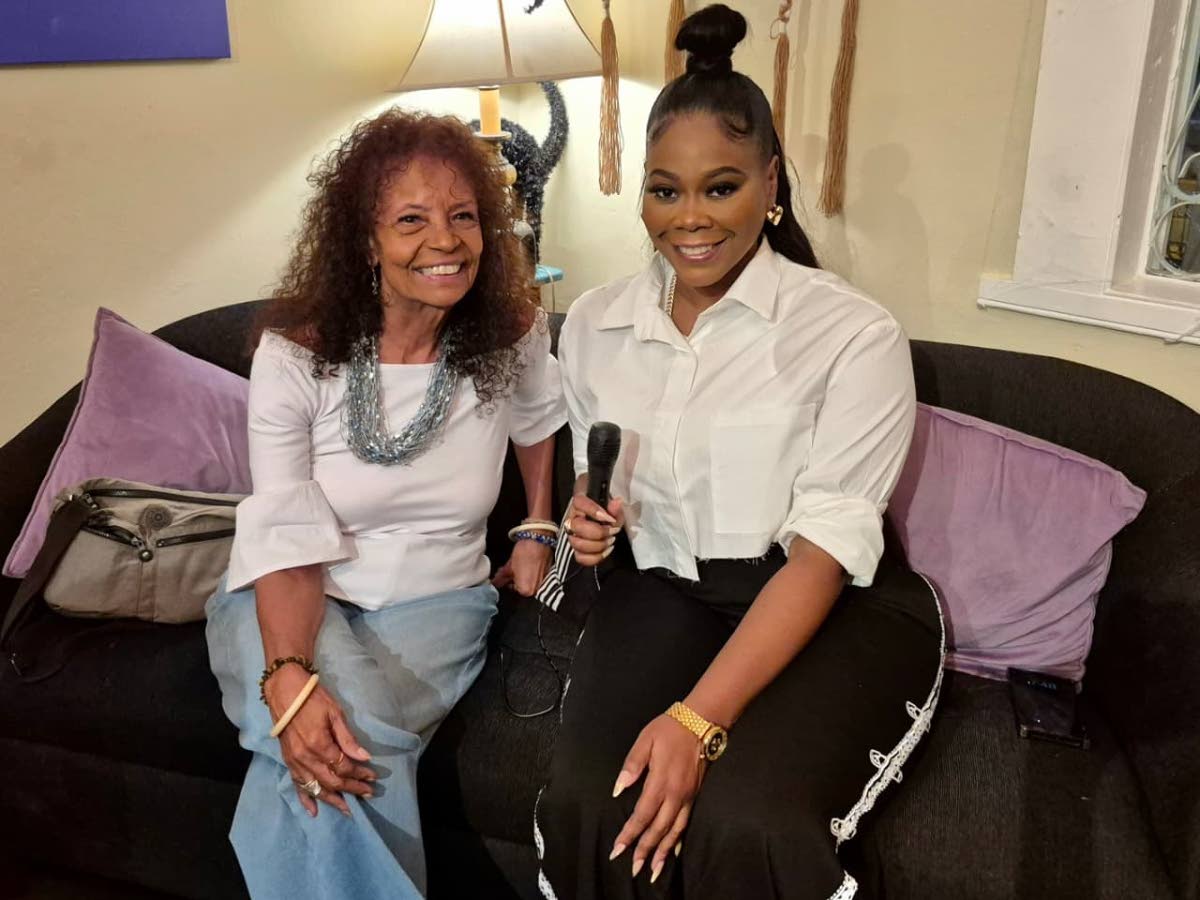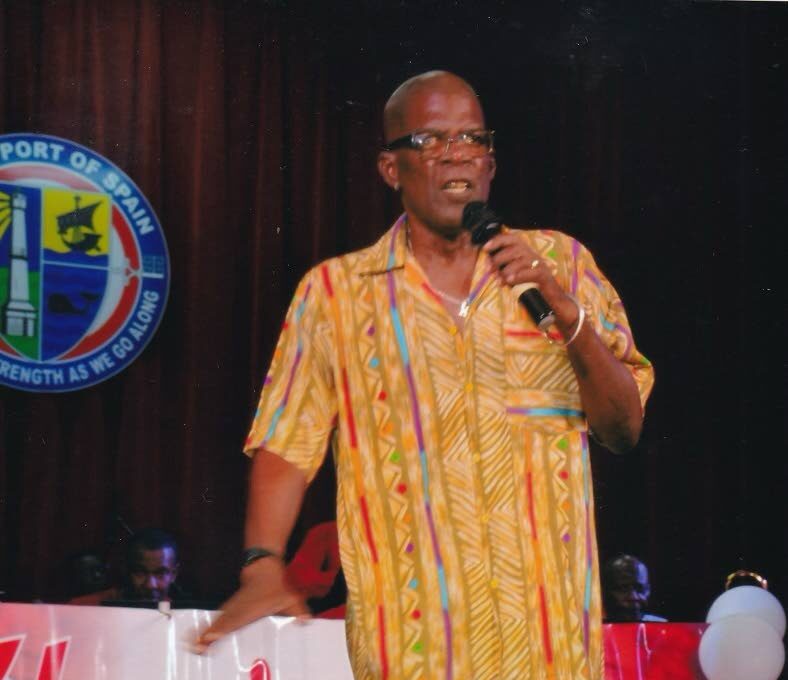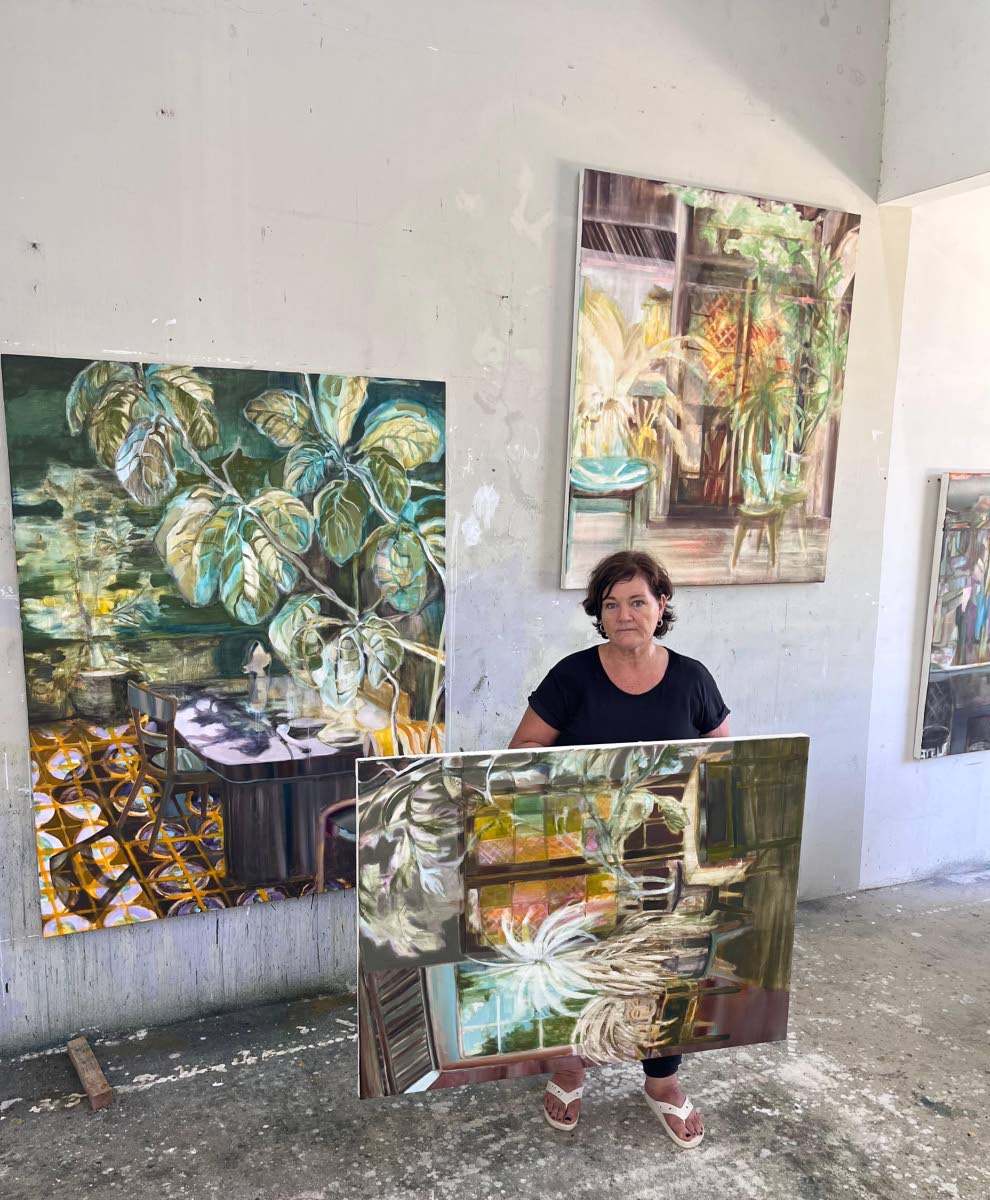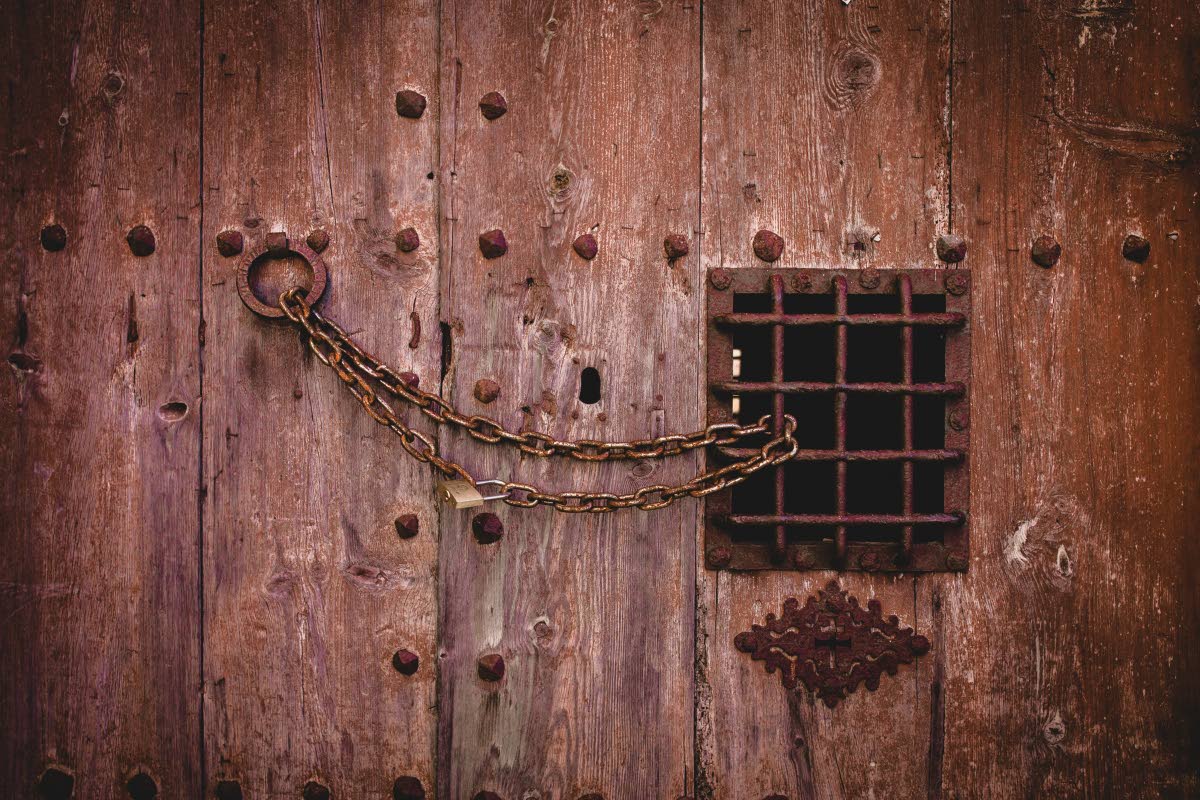At just seven years old, Nathan Ramasar is already making waves in both taekwondo and swimming. A Standard One student at Exchange Presbyterian Primary School in Couva, Nathan has been training in taekwondo since the age of three at Impulse Martial Arts School in Chase Village, under the guidance of Sabum Rakesh Bissoon. Currently holding a yellow stripe belt, he is preparing to grade for his yellow belt this month. Nathan’s passion for taekwondo is evident in his achievements, including a bronze medal at WAKO TT 2023, silver and bronze at ITF Taekwondo 2024, and gold and bronze at ITF Taekwondo 2025. His love for the sport is matched by his enthusiasm for swimming, where he trains at Wave Swim School in Endeavour under coach Cardesha Lyons. Nathan’s parents, Naresh Ramasar and Shalini Maharaj, emphasize the importance of balance, discipline, and enjoying the journey rather than just focusing on winning. His grandmother, Sharon Maharaj, a retired teacher, also plays a crucial role in his academic and personal growth. Nathan’s story is a testament to the power of family support, hard work, and the joy of pursuing one’s passions.
博客
-

Bring Your Own Book and Bottle: Bocas celebrates calypso stories
The Bocas Lit Fest recently hosted its BYOBB (Bring Your Own Book and Bottle) social event at The Writers Centre in Port of Spain, marking the culmination of Calypso History Month. The event featured writer and media producer Judith Laird and soca artiste-songwriter Nadia Batson as special guests. Calypso History Month, celebrated annually in October since its official recognition by the Trinbago Unified Calypsonians Organisation (TUCO) in 2002, honors the rich cultural heritage of calypso music. The evening’s highlight was a screening of Laird’s 1981 documentary, ‘Women in Kaiso,’ which chronicles the experiences of pioneering female calypsonians. Batson, known for her storytelling through music, shared insights into her creative process, emphasizing the importance of understanding the artiste’s personality when composing. The BYOBB series, hosted bimonthly, fosters intellectual exchange and cultural dialogue, offering a platform for attendees to engage with literary and artistic figures. Upcoming events at The Writers Centre include a celebration of Peepal Tree Press’s 40th anniversary, featuring discussions on Caribbean literature. For more details, visit bocaslitfest.com.
-

Protecting the Aripo Savannas: Fencing as a last resort?
Trinidad and Tobago is home to a wealth of biodiversity, including the Aripo Savannas, the nation’s last remaining natural savanna ecosystem. Despite its designation as an environmentally sensitive area (ESA) in 2007, the Aripo Savannas Scientific Reserve (ASSR) faces ongoing threats from illegal squatting, land clearing, and poaching. Over the past decade, at least 28 acres have been lost to squatters, highlighting the urgent need for enhanced protection measures. The lack of clear boundaries and enforcement has exacerbated the problem, with some signs marking the perimeter being ignored or absent entirely. The construction of the Elmina Clarke-Allen Highway has further isolated the savannas, making it difficult for wildlife to disperse. One proposed solution is the construction of a security fence along the entire 96,000-foot perimeter, estimated to cost around $5 million. This fence would serve as a physical barrier to illegal entry, improve wildlife corridor usage, and facilitate easier patrolling by the Forestry Division. The Environmental Management Authority (EMA) is well-positioned to manage such a project, given its experience with initiatives like the $69 million Nariva Swamp Restoration. While fencing may not be visually appealing, it offers a reversible and practical solution to safeguard this critical natural resource. Education and community involvement remain ideal, but fencing may be the necessary ‘last resort’ to ensure the Aripo Savannas’ survival.
-

Hamidullah brings a night of kaiso, humour, drama to Kafe Blue
Renowned calypsonian Hamidullah Wahid, known simply as Hamidullah, is set to headline the much-anticipated Moods & Views calypso concert at Kafe Blues on Wrightson Road, Port of Spain, on November 8 at 7 pm. The event will showcase a stellar lineup of artists, including Ras Kommanda, Valentino, King Luta, Sexy Suzy, Kid Kallaloo (Julien Hunte), Pharoah, and Skero. The performers will be backed by the Michelle Henry Encore Band, with Errol Fabien and Damion Melville serving as the evening’s MCs. Born into a family deeply rooted in calypso and steelpan traditions, Hamidullah’s musical journey began in the Amboys Steel Orchestra in Belmont. Over the years, he has become a prominent figure in the calypso scene, performing in numerous tents and co-founding the Klassic Russo tent in Port of Spain. A founding member of the Trinbago Unified Calypso Organisation (TUCO), Hamidullah is celebrated for his humorous hits like ‘One Stick of Matches’ and ‘You Can’t Land.’ His collaboration with Ras Kommanda through the Kaiso Unit has produced annual calypso concerts, offering a platform for artists to showcase their talent beyond the Carnival season. Hamidullah expressed his excitement for the upcoming show, highlighting the diverse talents of the performers and urging fans to join in the celebration of calypso music.
-

2026 Best Reggae Album Grammy predictions
As the 68th annual Grammy Awards draw near, the music industry is abuzz with excitement and speculation. The prestigious event, set to take place on February 1, 2026, at the Crypto.com Arena in Los Angeles, aims to honor the finest recordings, compositions, and artists from August 31, 2024, to August 30, 2025. Nominations will be unveiled on November 7, 2025, and among the most anticipated categories is Best Reggae Album. Industry experts and fans alike are engaging in spirited discussions, particularly on social media, about which albums might secure a spot among the final five nominees. Here are some standout contenders: Vybz Kartel’s ‘Heart & Soul,’ released on August 29, 2025, features hits like ‘I Know’ and ‘Bad Bad Bad,’ showcasing his continued dominance in the dancehall scene. Mojo Morgan’s ‘Jamaica Love (EP)’ is another strong candidate, with its nine tracks, including the standout ‘Make It,’ featuring Popcaan and Chronic Law. Jesse Royal’s ‘No Place Like Home’ offers a modern and innovative sound, with collaborations from Grammy-winning producers and artists like Melanie Fiona and Kabaka Pyramid. Keznamdi’s ‘Blood & Fyah’ is a critically acclaimed sophomore release, featuring guest appearances from Marlon Asher and Mavado. Mr Vegas’s ‘Ghetto Reggae,’ an independently released project, highlights his enduring talent and dedication to the genre. Lila Ike’s ‘Treasure Self Love’ is a deeply personal project that showcases her vulnerability and songwriting prowess, with contributions from Protoje and H.E.R. Lastly, Black Pearl Livingston’s ‘Your Richness is Life,’ a debut album rooted in reality, romance, and Rastafari, marks a significant milestone in her career. As the countdown to the nominations begins, these albums stand out as potential frontrunners in the Best Reggae Album category.
-

FOOTBALL REMAINS BENCHED
The Jamaica Premier League (JPL), sponsored by Wray & Nephew, faces an indefinite suspension as clubs struggle to recover from the devastating impact of Hurricane Melissa. Originally set to resume this week, the league has been postponed for the second consecutive week, with several teams suffering significant losses. Treasure Beach FC in St Elizabeth and Montego Bay United in St James are among the hardest hit, reporting extensive damage to club facilities and personal property, including the homes of players and staff. Even clubs in the corporate area, which avoided the hurricane’s full force, have not been spared from its effects.
Owen Hill, CEO of Professional Football Jamaica (PFJ), emphasized that the league’s immediate focus is on providing comprehensive support to the affected clubs rather than resuming play. While no lives were lost, Hill acknowledged the severe infrastructural devastation and the emotional toll on the football community. ‘We’re prioritizing mental well-being and livelihoods,’ he stated, adding that football-related matters are secondary at this time.
PFJ has mobilized resources, including water and non-perishable items, and is collaborating with sponsors, the Jamaica Football Federation (JFF), and the government to coordinate relief efforts. Hill stressed that recovery will be a long-term endeavor, requiring sustained support and logistical coordination. ‘Transportation and access to affected areas are major challenges,’ he noted.
With 14 games already postponed, Hill could not provide a definitive timeline for the league’s return. However, he expressed optimism that the JPL, when it resumes, will serve as a beacon of hope for the nation. ‘Football will continue, and we’ll use our platform to inspire resilience and unity,’ he said. Hill also highlighted the opportunity for the community to come together and rebuild, emphasizing that no club or individual will be left behind in the recovery process.
-

Andrea C Hoffer explores the House of Ambiences at Softbox Gallery
German-born, Tobago-based artist Andrea C Hoffer has unveiled her latest exhibition, ‘House of Ambiences,’ at the Soft Box Gallery in St Clair. This collection marks her first dedicated exploration of interior spaces, offering a deeply nostalgic portrayal of Trinidad and Tobago’s older homes. The exhibition, comprising 14 meticulously crafted paintings, captures the warmth, history, and quiet presence of these spaces, evoking a sense of timelessness and personal connection. Hoffer’s inspiration stemmed from a visit to a house on Cotton Hill Road, St Clair, where the interplay of shadows, lighting, and architectural elements left an indelible impression. This experience inspired the exhibition’s centerpiece, a large-scale painting that embodies the essence of ‘Trini at home sweet home.’ Hoffer’s works are rich with details familiar to Caribbean households—linoleum floors, circular ventilation bricks, well-worn furniture, and potted plants. Plants, a recurring motif in her art, reflect her personal affinity for greenery, as her Tobago studio is nestled within a lush garden. Hoffer employs the ancient egg tempera technique, mixing pigments with egg yolk and linseed oil to create a layered, earthy texture. Remarkably, she paints entirely from memory, eschewing sketches or photographs. Her process is intuitive, allowing the essence of each space to emerge organically. Many of her works incorporate historical elements, such as a door from her daughters’ great-grandfather’s home, which survived Hurricane Flora in 1963. These artifacts, imbued with personal and generational significance, add depth to her compositions. Hoffer’s artistic journey began in 1996 when she first visited Tobago, captivated by its natural beauty. Since then, she has exhibited her work internationally, blending European influences with Caribbean themes. Her unique style, which combines impressionism, abstraction, and realism, invites viewers to embark on their own imaginative journeys. ‘House of Ambiences’ runs until November 29, offering a poignant reflection on the enduring charm of Caribbean interiors.
-

More than just Monday wear: Asha Wadada embraces womanhood
Inspired by her personal evolution as a woman, mother, and creative, Asha Wadada, co-founder of House of Wadada, has unveiled her first solo Carnival collection, *alter HER*. The collection, launched in October, is a tribute to the diverse layers of womanhood, celebrating confidence, sensuality, power, and self-discovery. Wadada shared with WMN on October 29 that the collection emerged from her journey of embracing every facet of her identity, including the parts she once hid. “I wanted to express all of myself—the sensual, the confident, the grounded, the bold—without apology,” she explained. The collection’s name, *alter HER*, reflects the idea of a woman’s inner self, waiting to step into the spotlight. The designs, adorned with sequins and sheer mesh, are both glamorous and versatile, suitable for Carnival Monday and beyond. Wadada emphasized that the collection is not just about fashion but also about empowering women to embrace their complexity and express their true selves unapologetically. The response to *alter HER* has been overwhelmingly positive, with women connecting deeply with its message. Wadada, who also teaches yoga in Port of Spain, hopes the collection will inspire women to take risks and feel confident in their style. The line will debut at Carnival 2026 on February 16, marking a milestone in Wadada’s 15-year journey in the fashion industry. From her early days customizing clothes with her twin sister Ayanna Diaz to creating a lifestyle brand rooted in self-expression and feminine power, Wadada’s work continues to resonate with women across the Caribbean and beyond.
-

Caribbean superpowers unite
In October 2023, Elspeth Duncan was invited to lead a morning relaxation and meditation session at the Good Deeds Day Regional Conference, held at the Magdalena Grand Beach & Golf Resort. The event brought together participants from across the Caribbean, all committed to fostering positive intentions and actions. During the session, a participant from Spread the Love Curaçao gifted Duncan a handmade “love and kindness” rock inscribed with the message “Strong Together.” This simple yet profound token serves as a symbol of the Caribbean’s enduring unity and shared identity. Duncan reflects on the region’s unique strengths, including its cultural diversity, resilience, and collective spirit, which have historically enabled Caribbean nations to overcome challenges. She emphasizes that the Caribbean’s true power lies in its ability to come together, not just in times of celebration but also in moments of crisis. This unity was recently demonstrated in the aftermath of Hurricane Melissa, which struck Jamaica in late October. Despite the devastation, social media was flooded with calls for assistance and solidarity, highlighting the region’s deep sense of community. Duncan also draws attention to the often-overlooked victims of natural disasters—animals. Her NGO, Venus Doggess Of Love, is organizing a film-screening fundraiser to support the Montego Bay Animal Haven in Jamaica. While the funds raised may seem modest, Duncan believes that every contribution, when combined with others, can make a significant impact. The Caribbean’s ability to unite in adversity, she concludes, is what makes it a true superpower.
-

The fight against freedom
In the decade leading up to the Emancipation Act, Tobago’s planting community braced for the anticipated consequences of the anti-slavery movement. Fearing violent resistance from the African population, which they labeled as criminal, authorities implemented stringent measures to maintain control. These included harsher laws, an expanded and more regulated police force, and enhanced judicial facilities. A new courthouse was constructed above the marketplace, providing magistrates with larger spaces to operate. Simultaneously, the police forces in Scarborough and Plymouth were bolstered by a new law that introduced two additional magistrates to oversee law enforcement and address offenses. These magistrates were required to hold court sessions twice weekly, year-round, and were empowered to appoint constables to maintain order during market days and apprehend offenders. To accommodate the expected rise in incarcerations, the Scarborough Jail was expanded. The prison’s design was rooted in four key principles: the anticipated increase in prisoners due to societal tensions, the need to prevent escapes, the deterrence of external assistance to inmates, and the enforcement of labor as a core component of incarceration. The new facility, constructed by John H Noding, was a two-story structure designed to be escape-proof, with reinforced walls, iron gates, and secure partitions. A committee was established to oversee the project, ensuring its timely completion by June 1, 1824. Parallel to these developments, the militia was strengthened through a 1827 law that introduced strict regulations, mandatory enlistment for free men aged 16 to 55, and provisions for uniforms and weaponry. Notably, the law allowed for the inclusion of black and colored sergeants and corporals, a pragmatic move driven by the shortage of white men. However, racial distinctions persisted, with black and colored members positioned on the left during parades. Despite these efforts, the tide of history was against the planters, as the anti-slavery movement in Britain gained momentum, making the abolition of slavery in the colonies inevitable.
